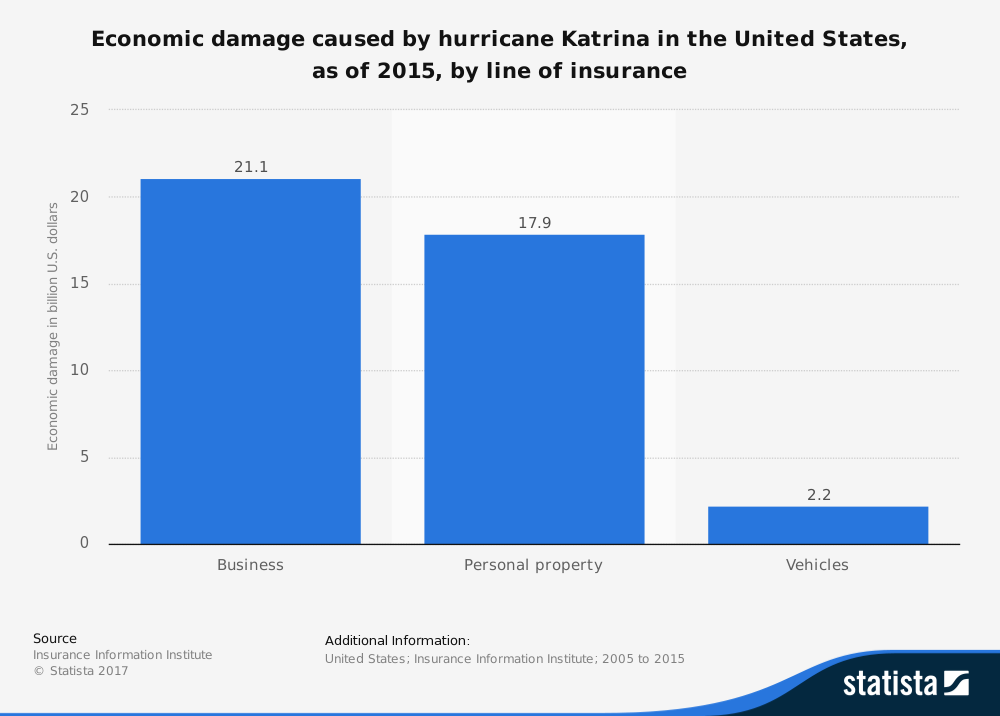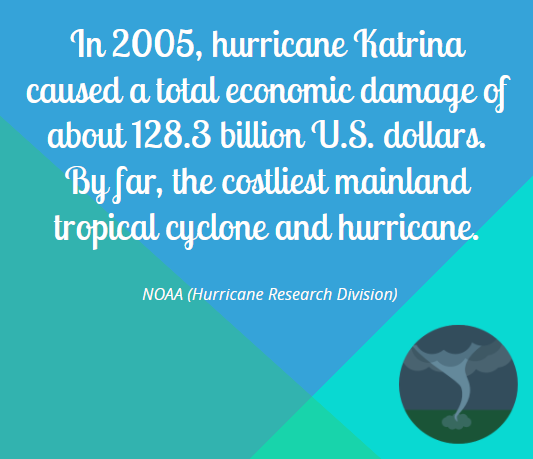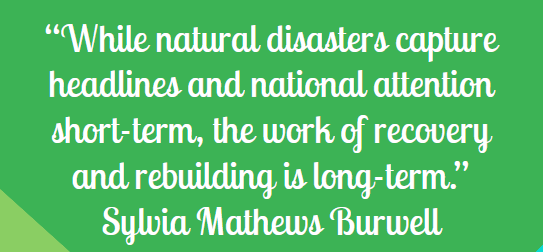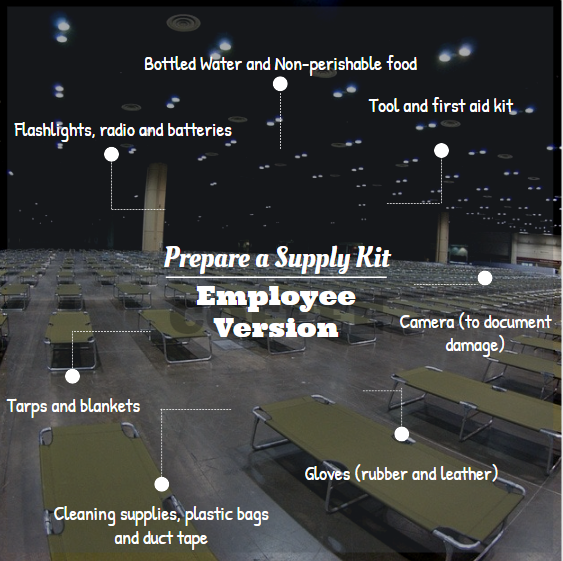Natural Disasters and Business Continuity
The risk of a company having to close permanently after a hurricane, earthquake, fire or other types of natural (or man-made) disaster makes business continuity planning critical for businesses of all sizes. This includes drafting a prevention plan, making preparations for an impact, calculating the incident response time and looking into how a company can restore operations following a disruption.

Due to low warning times, there really is no easy way of protecting yourself and your business in the aftermath of a disaster. Reports suggest that Hurricane Harvey has cost the nation tens of billions of dollars in damage. With this in mind, it is important to know that even a small window of warning is an opportunity to execute a disaster recovery plan for your business. This is why a business continuity plan should be rehearsed, maintained and reviewed annually to ensure you have the best chance of overcoming a tragedy such as this.

The fact is that businesses rarely think about safeguarding their assets and inventory unless a disaster affects their business in an adverse manner. Surprisingly, most industries continue to repeat their mistakes and remain unprepared because they think that natural disasters are a one-time event. One of the ways to cast a wide safety net around your business assets is to implement asset tracking software. Before we go into that, though, let’s discuss the impact of such catastrophes on the business community.
The Impact of Disasters on Businesses
The truth is that all businesses are vulnerable to natural disasters – it all depends on geography. You may have set up your company in a location with a very low expectancy of facing a hurricane, tornado, earthquake, or flood. But this doesn’t mean your assets can’t be subject to other forms of loss. Keeping up-to-date and accurate records using an automated cloud-based asset tracking software makes asset tracking easier and limits business risks towards a disaster.

What happens when you’re not prepared? According to Statista, Hurricane Katrina caused losses of about 21 billion U.S. dollars to businesses in 2015.
The cost of natural disasters for businesses extends far beyond the dollar damage to assets and inventory. Additional costs include lost production, unplanned shutdowns, lost revenue, lost customers, disruption of services and a tarnished reputation. The difficult thing is that no amount of business insurance can cover this.
There are no exemptions! Natural disasters in 2012 showed that disasters are actually quite common and that no industry is exempt from their impact. For example, Hurricane Sandy may have received a lot of attention for power outages as well as the flooding it caused, but it also impacted schools, governments and disrupted almost every industry within the geographical area.
Therefore, you don’t want to be caught unprepared when a disaster occurs in your region. Run a threat assessment to protect your inventory, assets, and especially your employees. Be proactive to cut down risks to your business, and give the people who work for you the best chance against displacement in the aftermath of a disaster.

Read More: Why Disaster Management Companies need an Inventory Control Software
Inventory Management: Paper Records Versus Automation
You cannot recover your business assets without properly documenting their details in the first place. Start making a complete inventory of your business. Put down everything on paper! Wait, why? What if all the records go missing or perish during the natural disaster, or even a fire or a theft? This is a genuine concern for businesses, which is why they are best served by storing records off-site or online and backing up their information as regularly as they can.
Businesses must record everything in their inventory, including furnishings, computers and all on-site equipment and supplies. You can upload pictures of all the items to assist in the process. Having it all recorded on an automated and cloud-based asset tracking software ensures that all the details are accurate, secure and updated in real-time – useful when tracking down all the inventory for recovery and audits. In contrast, a manual tracking method not only increases the potential for human error but also creates a record that can be just as easily lost as the physical assets themselves.

Read More: Cloud-based Equipment Tracking Software Versus On-Premise Tools
Creating a Disaster Plan for Your Business (and using Asset Tracking Software for it)
Natural disasters are inevitable. They can wreak havoc on communities, costing billions of dollars worth of damage to homes and business owners. Though earthquakes and hurricanes are monitored closely, they still give people only a small window of opportunity to make preparations. Still, for your business, the time to make emergency preparedness plans must be done beforehand – not hours before a disaster is said to hit your region.
In order to protect the assets that are vital to running your business, you should create an all-inclusive disaster preparedness plan, rehearse it, update it, and review it regularly. A copy must be kept at an off-site location and uploaded online for easy access. Start your disaster plan by identifying what you need to do to protect the business in case of a natural or man-made disaster. When creating your plan, keep in mind the following and take notes on how using asset tracking software for it can be useful:
Assessing the Risk
The most important phase of a disaster recovery plan is to assess the risk your business might face in the event of one. This would include putting down all the records of your assets and inventory, making sure that the workflow goes as smoothly as it can, and ensuring that all employees are tasked with specific responsibilities.
Staff members and executives from all departments in your company – including finance, PR, operations, legal, production and other units – all must be well informed on how a disaster could affect the operational workflow, production facilities, warehouse management, supply chain, IT and digital equipment, and other resources, locations, or departments. Cross-training must be given to members of your company who can act as a backup for executives if they are not able to perform their duties in an emergency.
Of course, for some industries, maintaining a duplicate or extra production line isn’t a practical option. However, services firms can set up a hotel room and continue operations off the ground somewhere. For this, work orders can be created in an asset tracking software which can be then assigned to relevant members. This ensures a smooth workflow – executives will know who to contact in a time of emergency and the list may include supervisors, suppliers, clients, emergency response teams, maintenance teams and other interested parties.
Data Backup via Storage Solutions
It’s important to keep computers, hardware, and other IT assets safe, but it is just as crucial to realizing the worth of business data that may be stored on all these devices. There’s no assurance of your data being secure after a disaster, but it’s essential to recover as much as you can as that will help you bring back your business online and continue normal operations. Therefore, you must always go for the backups! If there’s even a tiny chance that one data location could be damaged in the event of a disaster, keep another copy elsewhere that can be restored later. The best thing you can do is to keep all sensitive data and important business records in a fire/water proof storage container, or even better – on the cloud! The question is where is your sensitive business data stored? Do you have it on paper or a hard drive or maybe on a server installed in the building? And does it have the potential to be damaged during a natural disaster?
It’s not enough to assume that backing up the data will help you recover in less time. As suggested earlier, the best solution for keeping your data safe is by storing it in the cloud. Cloud technology has evolved over the past few years, and it ensures that your data is safe from unexpected disasters or unpredictable outcomes. With asset tracking software, you can retrieve your data via different methods like API calls, downloading the reports in different formats, and by uploading information to a 3rd party storage application like Dropbox. You get to access the document library where all documents and records are saved – any place, and at any time. You can even scan tax forms, W-2s, and other important documents into a digital format and upload them onto the asset tracking app for continued access to your data.
Read More: Rise of Cloud Technology – More Opportunities for Small Businesses

Regardless of what the company policy is on data backups, it must be the norm to periodically make attempts to recover the data – making sure the backup strategy is functioning properly. Remember to rehearse and maintain the disaster recovery plan for business continuity, as that will help you sustain operations in even the most trying of circumstances.
Assign Tasks to Employees
Disaster preparedness is essential if you are to withstand the consequences of a disaster. It ensures that recovery is practiced quickly and effectively, and that business operations are consistently smooth. A business must have a method of notifying employees concerning their work status before and after the disaster hits. In such an event, your staff will need to know who should be contacted and how! Prepare a communication plan for them and make sure they have access to it in the event of an emergency.
During such an event, the common points of contact like landline connections, the internet, and cell towers are damaged the most. Although satellite phones can be costly, they are worth buying for such events. Store them at a location which can be easily reached, for example in a water or fire proof container. If possible, use social media to keep the customers aware you’re still in business, and in the process of rebuilding. This would surely be good news for them, as you can quickly quell any concerns they might have about relocating to find another source of income.

What helps? Assign key employees the responsibility of contacting customers, utility companies, suppliers and creditors during your recovery. This can be done via work orders and asset assignments that can be triggered during and after a disaster. Do not forget about the safety of your employees! A well-designed supply kit can be invaluable during a disaster. Be sure to make enough kits for all your employees, bundle them together and then stick asset tags on them so that they are easy to locate even if they’re moved during a disaster!
Additionally, evacuation plans and procedures for employees must be drafted and shared on a single system that they can easily access. Emergency contact information must be documented, along with their roles, tasks, and responsibilities. For all this to succeed, training must be given to these employees. All these details can be stored on the employee’s details page within an asset tracking software so that there is little confusion when they try to regroup and rebuild in the aftermath of a catastrophic event.
Vendor and Maintenance Management
Disasters can wreak havoc on warehouses. All that mess, and no records of what went where, what was lost, and how much remains to be recovered! During the recovery process, it becomes hard to keep track of all the inventory stock. Papers and physical documents are not much help if destroyed during the storm. Replenishment of items is impossible when you can’t track down the suppliers. This disrupts the overall business continuity. To fix this, a real-time inventory must be maintained, and you must regularly update your list of suppliers. This is because the purpose of having a preparedness plan is to continue business operations and recover losses in a short span of time.
You can maintain supplier and vendor details online without the fear of data loss. Keep a list of alternate suppliers in the system in case your supplier experiences a disaster. Contact suppliers when the replenishment of stock or replacement of assets is required. Keep moving ahead! That’s the beauty of having a cloud based inventory management software – you can always forge ahead and be confident in the fact that you’re recovering as much as you possibly can under the given circumstances.
You need to implement asset tracking software that also has the capability to run maintenance checks on the equipment and runs repair processes when triggered. Hurricane Katrina, which hit America between the 25th and 30th of August 2005, caused insured property losses amounting to 49.05 billion U.S. dollars. The idea should be to protect windows using storm shutters, reduce the risk of broken glass, and unplug or turn off all electrical, gas, or water outlets. Sensitive areas must be evacuated in advance, and of course – human life gets priority over everything and anything else! For this reason, you should always hire licensed contractors so your company adheres to electrical and HVAC regulations. All computers, electronic devices, and important documents must be backed up regularly. All this and more can be planned with proper maintenance management.
You can use a maintenance management software to schedule services and maintenance checks on all the equipment and keep track of suppliers. Right after a disaster, you can send your production machinery for quick repairs. If you send only what’s essential, you can keep your business open with ease.
Read More: 5 ways Maintenance Management helps you reduce maintenance costs
Benefits of a Disaster Plan for Businesses
What happens when a disaster hits your business? The aftermath is unpredictable, but you can undergo the following benefits with an implemented disaster plan:
Limited Risks to Business Assets and Equipment: When you undergo a disaster preparedness plan, you make sure that your business assets, heavy machinery, inventory stock, and electronic equipment are less prone to damage. All your sensitive data is stored online and backups are well planned. Supply kits are organized and ready to be dispatched, and employees are trained for action – they know who to contact in an emergency and how to continue business activities without much delay. All items are easy to locate and recover, in better condition, and actions can be taken on them in record time to reduce loss.
Assets Recovery and Audits: All asset data stored on an asset tracking software helps you recover and locate assets. You can find out who was last in possession of an item, and which item was damaged during the disaster. You can even conduct a quick asset audit by scanning barcodes of all the equipment on your mobile phone. This lowers your dependence on specialized tools, and you can maximize productivity at very little cost to you and your team!
Business Continuity – Getting Back Online in Less Time: When a disaster hits your organization, the first thing you want to do in the context of your business is to make sure you get it back online as soon as possible. All this requires an emergency preparedness plan for business continuity which involves preventive disaster measures, evacuation, and off-site operations strategies for staff members and executives. In addition, you must have quick response times and management, as well as a well-executed recovery plan to retrieve all your data and assets and recuperate losses. Do that, and let the public know that you’re still in business and in the process of rebuilding so that it instills a stronger faith in the ability of the community to get back on its feet quickly after the disaster.

An effective business continuity and emergency preparedness plan can help business owners minimize economic losses through a quick assessment of damages and a masterful plan of recovery.
Inventory Management and Asset Tracking Software for a Well-Executed Disaster Preparedness Plan
A robust and efficient online asset tracking software can help you improve workplace efficiency and asset utilization for better performance! It can be used to tackle critical situations like hurricanes, floods, and earthquakes, and helps companies prepare a business continuity plan to meet these horrific challenges better.
For more assistance, drop us an email at support@ezo.io






